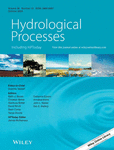Changes in Vegetation Phenology and Water Use Efficiency Driven by Warming and Wetting in Northwest China
Zhang, Wenqing , Bai, Yanling , Liu, Liu , Chen, Yudong , Zhang, Jiayi , Lun, Yurui , Li, Xiuping
2025-03-01 null null 39(卷), null(期), (null页)
Vegetation phenology is a key indicator of climate change and plays a vital role in ecosystem water use efficiency (WUE), which balances carbon sequestration and water loss. As global climate change accelerates, understanding its effects on phenology and WUE is essential for comprehending ecosystem dynamics and carbon-water cycles. Northwest China (NWC), one of the driest regions at similar latitudes, is experiencing a rapid shift from a warm-dry to a warm-wet climate, posing significant challenges to its fragile ecosystem. In this study, we used reanalysis and satellite remote sensing datasets to analyse the changes in the start of the growing season (SOS), the end of the growing season (EOS) and the length of the growing season (LOS) for various vegetation types in the NWC from 1982 to 2015. The focus was on how temperature and precipitation variations influenced phenological dynamics and their subsequent impacts on Gross Primary Productivity (GPP), evapotranspiration (ET) and WUE. Our results show that NWC has experienced a significant warming and wetting trend, with the SOS advancing by 0.04 days per year and the EOS delaying by 0.04 days per year, leading to a notable extension of the LOS by 0.08 days annually. Temperature primarily drives the SOS advance, while precipitation changes in croplands and grasslands and temperature shifts in forests and shrublands dictate the EOS delays. WUE increased at a rate of 0.005 gC m-2 mm-1 year-1, with temperature and precipitation influencing GPP and ET both directly and indirectly through phenological changes. The findings underscore the cascading effects of warming and wetting on vegetation phenology and WUE in the fragile NWC ecosystem. Changes in the vegetation growing season have had significant impacts on carbon and water fluxes, with varying effects across different vegetation types. This study provides valuable insights into the response mechanisms of vegetation to rapid climate change in arid and semi-arid regions and offers critical information for the sustainable management of water resources and agriculture in the NWC.
相关推荐
- The difference in ecological environmental quality impact factors between human activity zone and non-human activity zone in arid regions: A case study of the northern slope of the Tianshan Mountains [2025-03-01]
- Optimization Assessment of Projection Methods of Climate Change for Discrepancies between North and South China [2025-03-01]
- Transition Characteristics of the Dry-Wet Regime and Vegetation Dynamic Responses over the Yarlung Zangbo River Basin, Southeast Qinghai-Tibet Plateau [2025-03-01]



